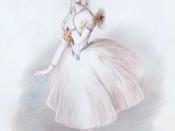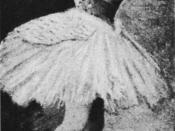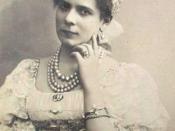A Brief History of Ballet.
bal÷let n.
1.A classical dance form characterized by grace and precision of movement and by elaborate formal gestures, steps, and poses.
2.A theatrical presentation of group or solo dancing to a musical accompaniment, usually with costume and scenic effects, conveying a story or theme.
3.A musical composition written or used for this dance form.
4.A company or group that performs ballet.
French, from Italian balletto, diminutive of ballo, dance, from ballare, to dance. See ballerina.
Marie Taglioni often gets the credit and the blame for being the first to dance on pointe, but no one really knows for sure. It is established that in 1832 Marie Taglioni danced in the full length La Sylphide on pointe. But almost certainly there were dancers before her who rose onto the tips of their toes. It's even possible that Mme. Camargo had done so one hundred years before.
There are references in different texts of various ballerinas with "fantastic toes" or of "falling off her toes". Taglioni herself most likely danced on pointe before La Sylphide. But whoever was first, it was Taglioni who pioneered and developed the technique and who revolutionized ballet as a result. She transformed dancing en pointe. What had been merely a stunt and a kind of circus trick became a means of artistic expression, a dramatic as well as a technical feat. Her grace, lightness, elevation and style earned her an adoring audience and a brilliant career.
Before we consider what Taglioni did and how she did it, let's look at why she rose on pointe at all. The 1830's were the heart of the Romantic Age. The artists and poets of this era were often concerned with beauty, passion, with nature and with the supernatural, with the power...



Ballet
There is enough info about the topic, but it was hard to see. The grammar was a little messing, and I do not believea sentence should start "But." However, the essay did change my eye throughout it, the details are good and attract you to subject. Overall, I think the essay should just be review and put together tighter.
7 out of 7 people found this comment useful.